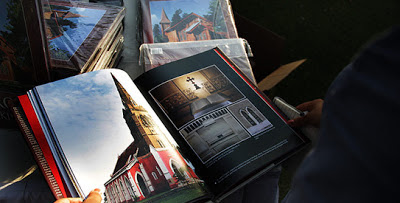By Peerzada Salman | From the Newspaper | 27th September, 2011
The book is a tribute to Pakistani Christians who had done so much for the country. – Photo by Nadir Siddiqui/Dawn.com
Introducing the book to the audience, head of a publishing firm Iqbal Saleh Mohammad said it was a tribute to Pakistani Christians who had done so much for the country.
He said there were many an unsung and unremembered member of the Christian community who had served Pakistan in different capacities. He began by naming S.P. Singha and Mr Gibbons, who before partition voted in favour of the division of Punjab in the legislative assembly. He also talked about Brig Harold Boyd Rodham, an Indian army officer, who after partition opted for Pakistan and joined the Pakistan Army. He touched upon the invaluable services rendered by Justice Cornelius to Pakistan – he was a judge even before independence and became the Chief Justice of Pakistan after 1947.
Squadron Leader W.D. Harney and Wing Commander Mervyn Leslie Middlecoat were given a mention. He said despite the fact that the Christian community comprised only three per cent of the country’s total population, its contribution was significant.
He claimed that one of the many feats that the book would achieve was that it’d make students aware of an outstanding minority.
He claimed that one of the many feats that the book would achieve was that it’d make students aware of an outstanding minority.
Journalist Asif Noorani spiced up his speech with anecdotes from his personal life.
He said Churches of Pakistan was not one of those books which couldn’t be judged by their covers. He showered praise on the picture of a church in Nathiagali on the cover of the book.Discussing various architectural styles of churches, he said if Karachi’s St Lawrence’s Church had elements of Mughal architecture in it, St Patrick’s was made in a Romanesque style and was an example of sublime beauty. Describing the salient features of the book, he said the pictures in it (taken by Javaid Kazi) weren’t manipulated and the text was informative.
Chairman of the Higher Education Commission Javed Leghari echoed Mr Noorani’s feelings and said he’d personally seen that church in Nathiagali and thought it was a beautiful work of architecture. He pointed out contributions of members of the Christian community and added the name of the slain minister Shahbaz Bhatti to the list.
He rounded off his speech by informing the audience about the different programmes undertaken by the HEC in relation to the churches of the country.
Country Director of the British Council David Martin, who was the chief guest of the event, said the history of Christianity in Pakistan was not a new phenomenon; its roots went farther in the past.
He said, as given in the book, Christianity reached the subcontinent about the same time, if not earlier, when it reached some remote areas of Europe. He said the pictures in the book had strong symbolism and commented that churches were not built in a religious vacuum – they involved local architectural techniques and fashions of the time, which was why in some churches one saw Victorian or Edwardian Gothic style and in others Romanesque. He said Christian tradition drew on many values, and its followers had not always had an easy ride.
Deputy High Commissioner Francis Campbell said the book illustrated that the presence of churches in Pakistan was not just a relic of the past but had a vibrant presence. It also illustrated the contribution of a minority to a wider society.

No comments :
Post a Comment
Thank you for comments